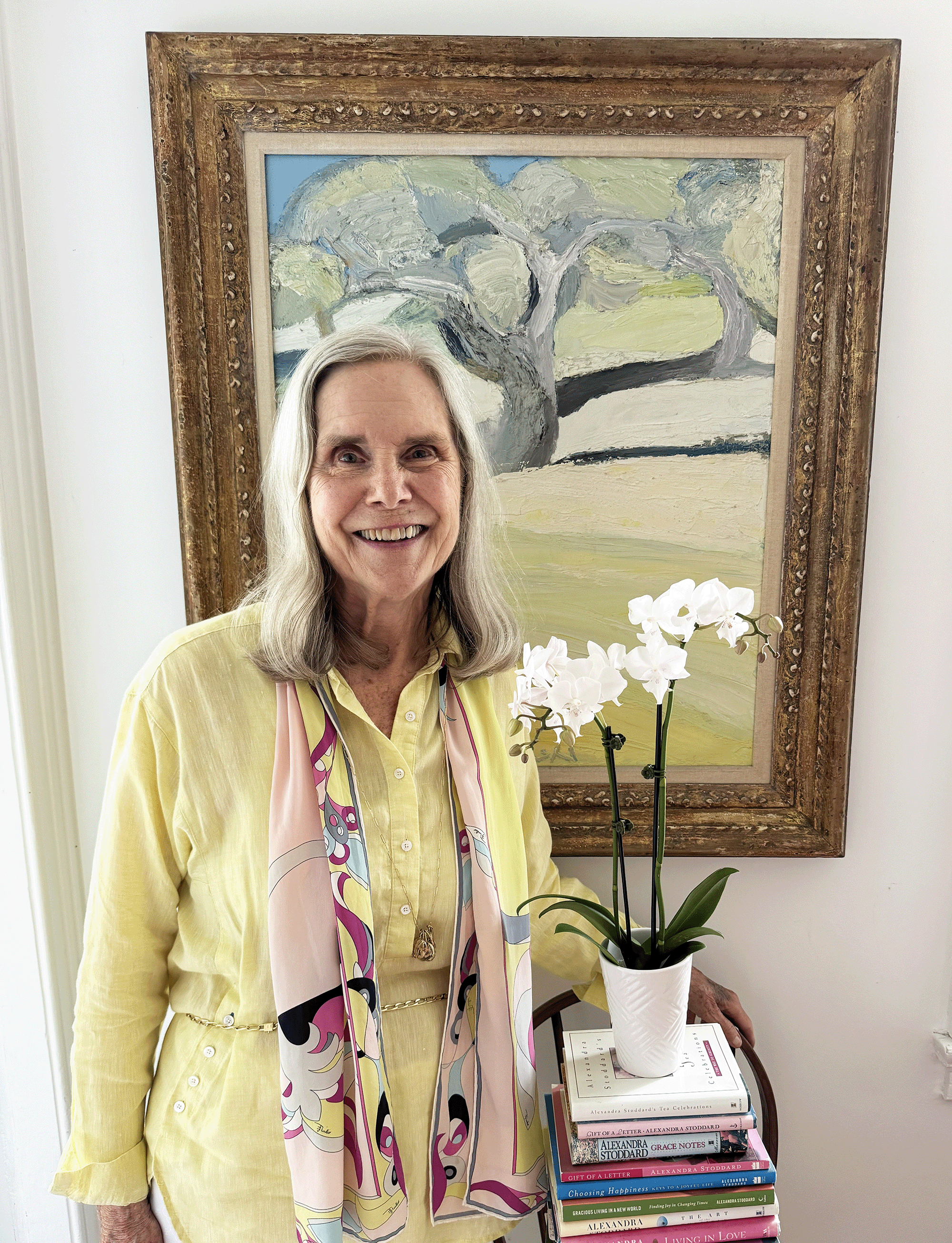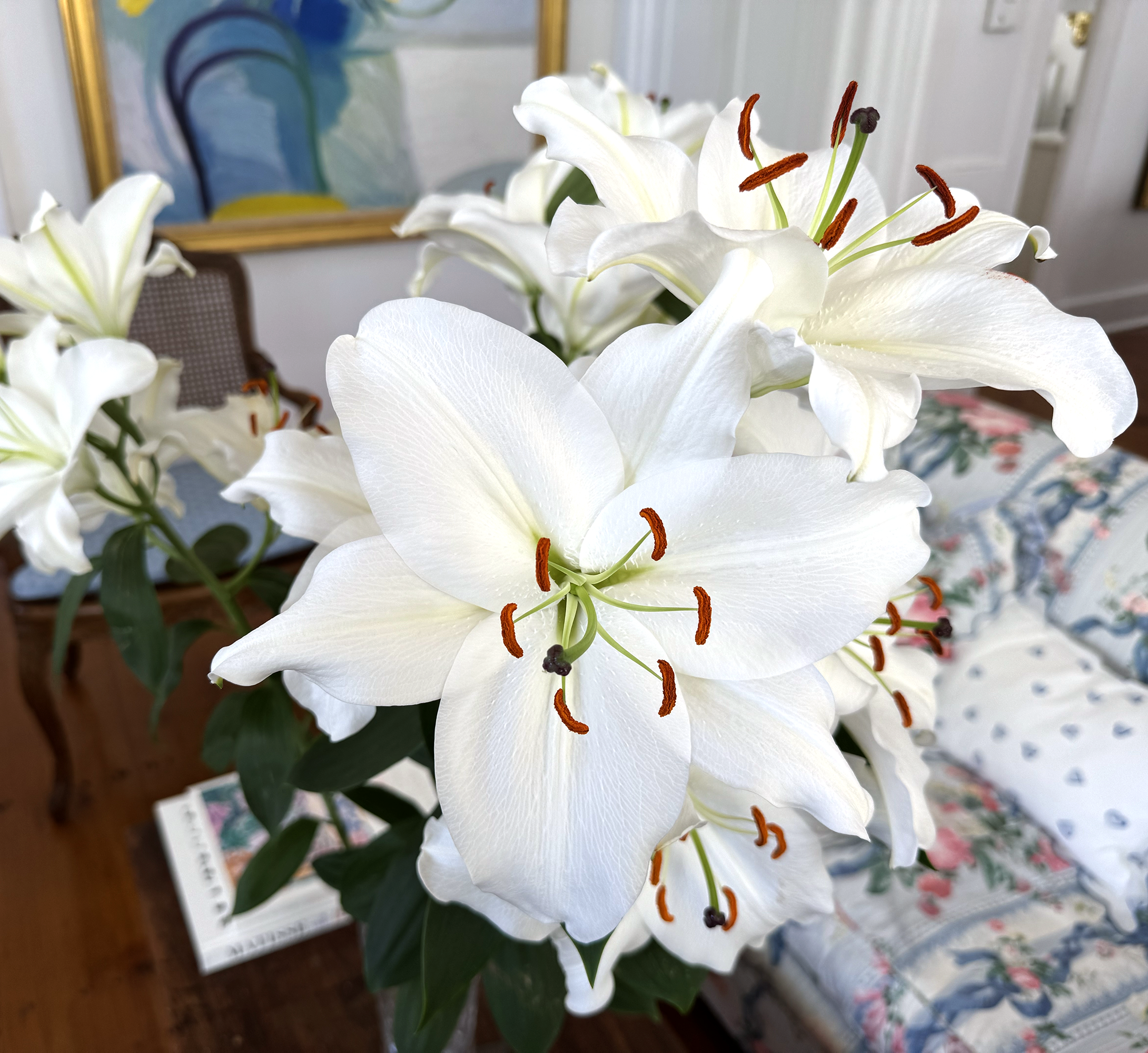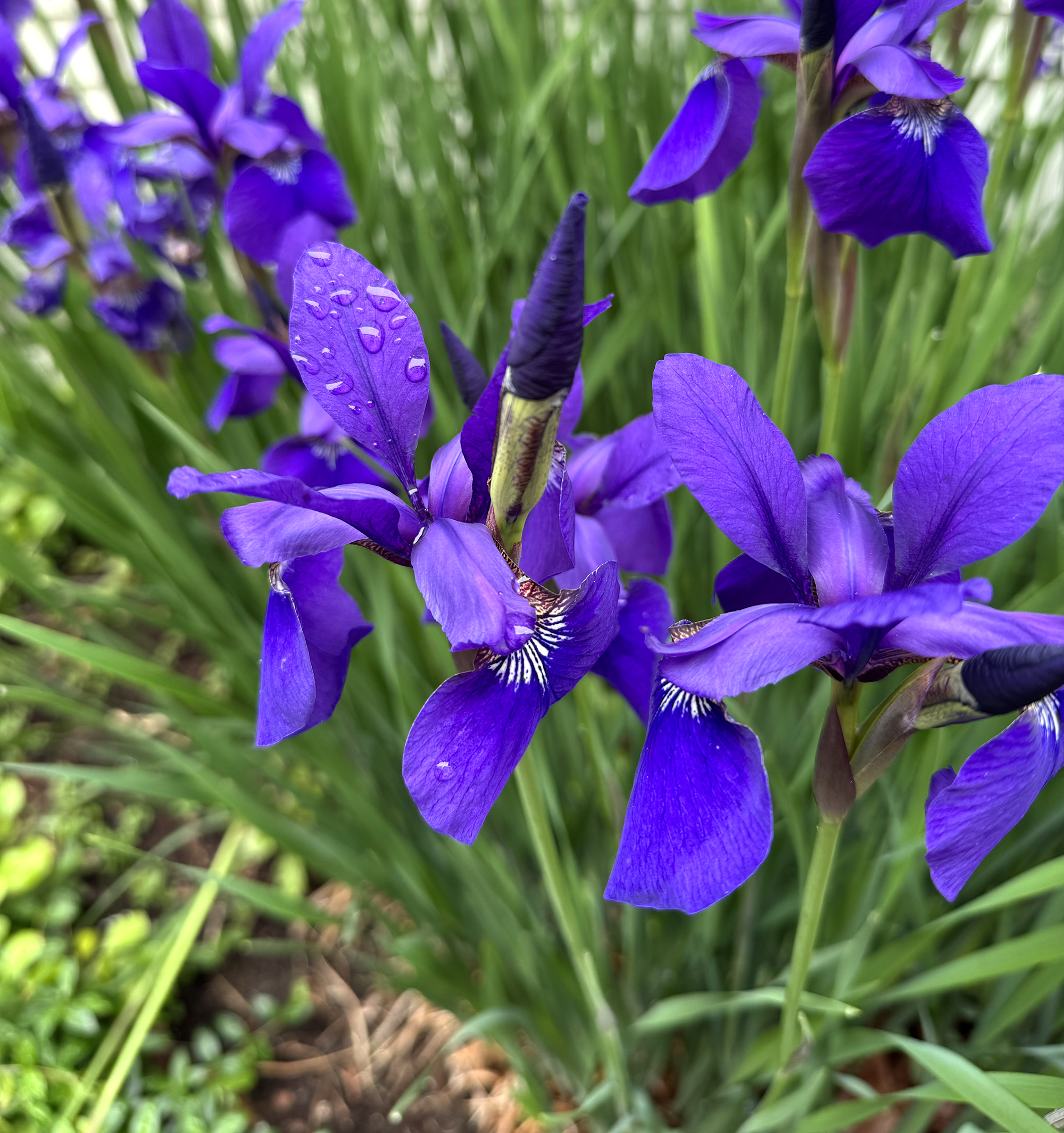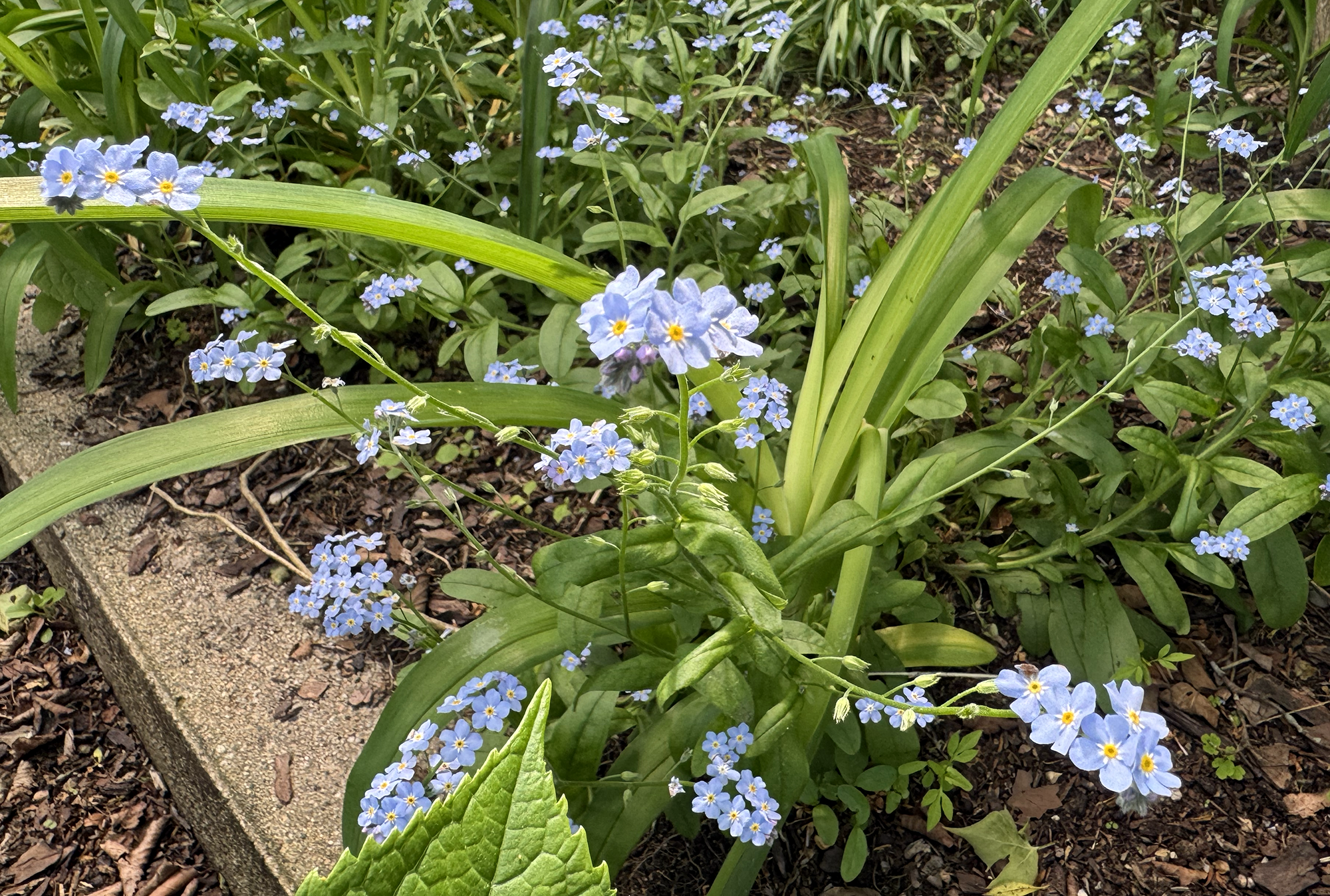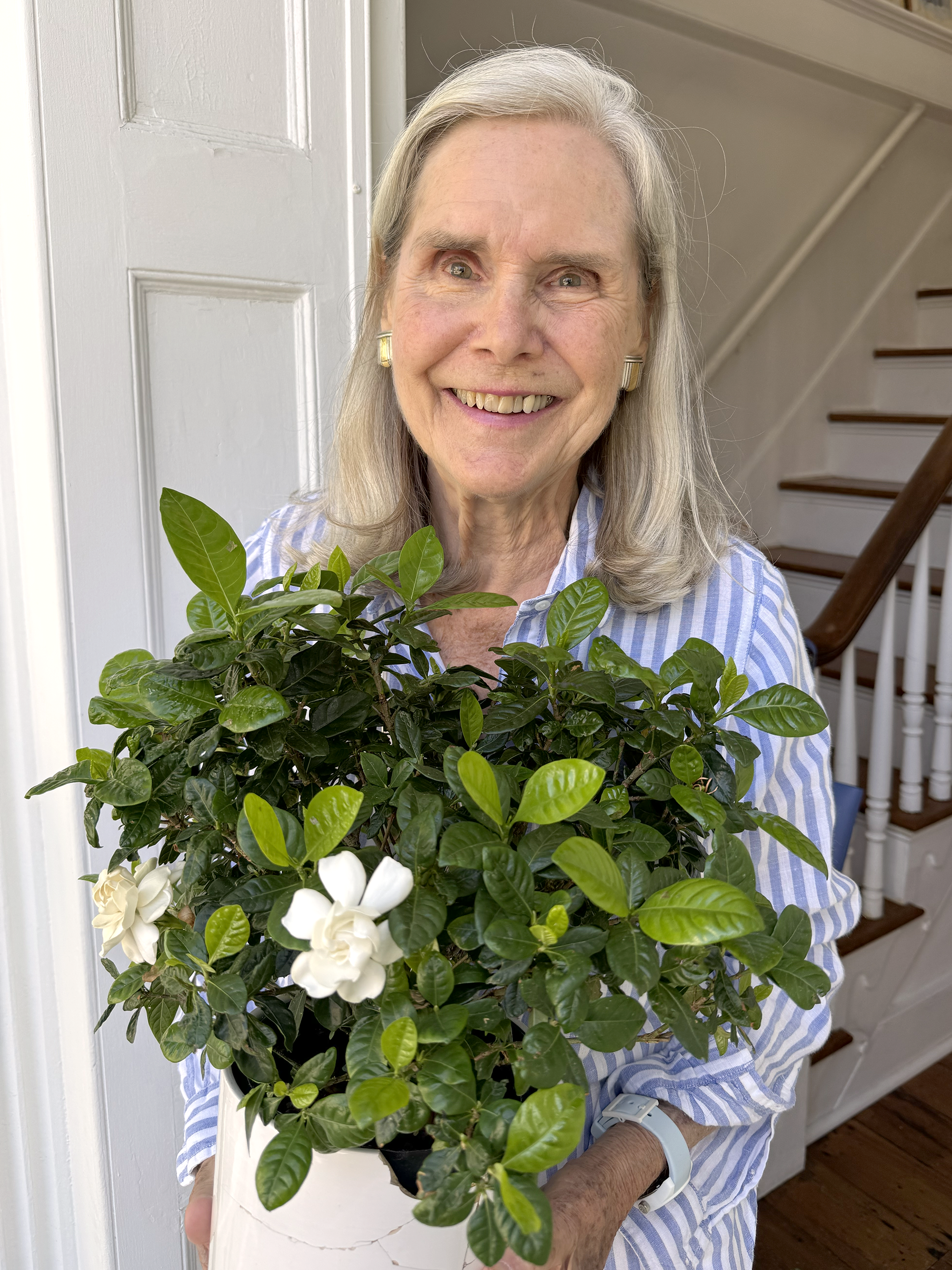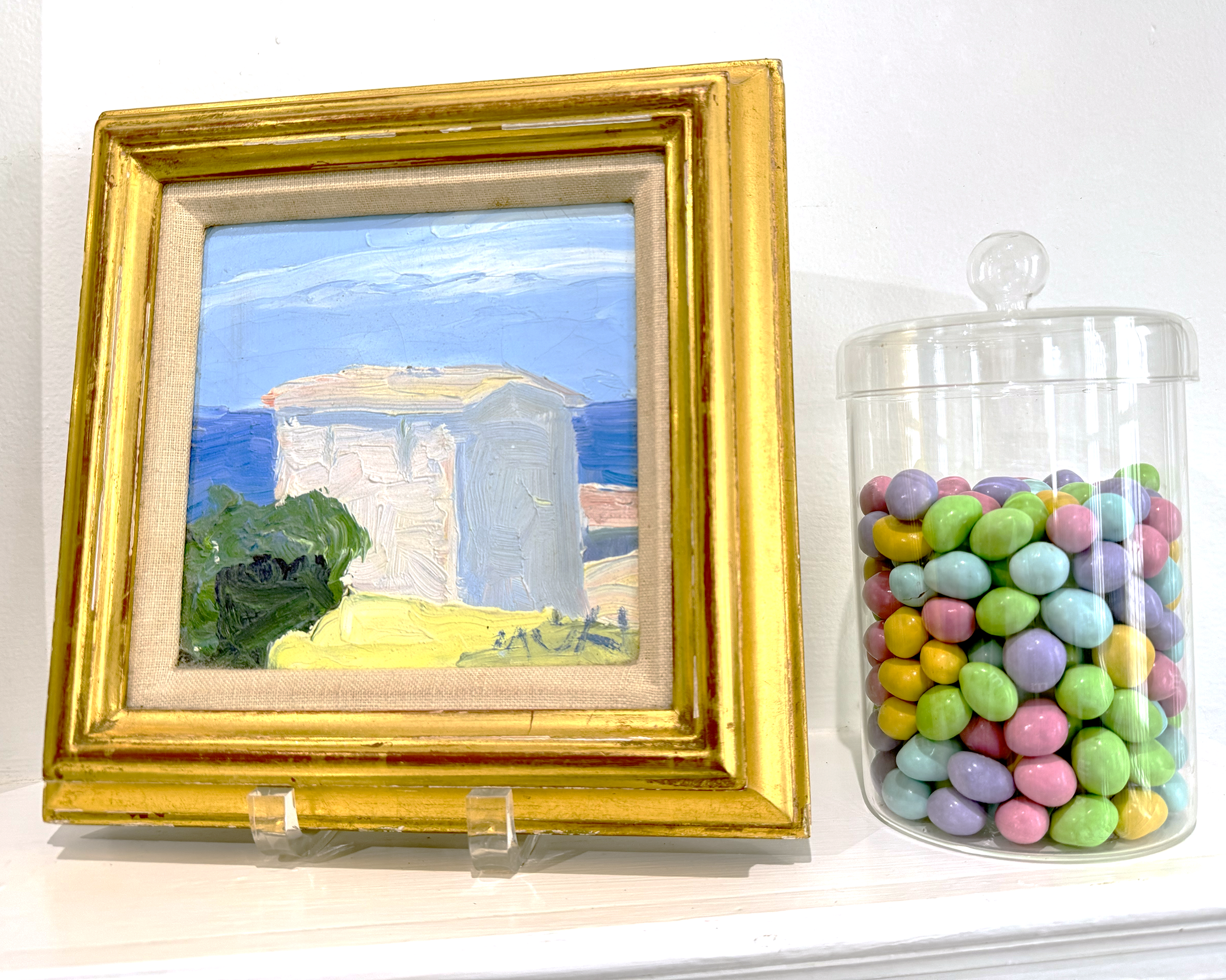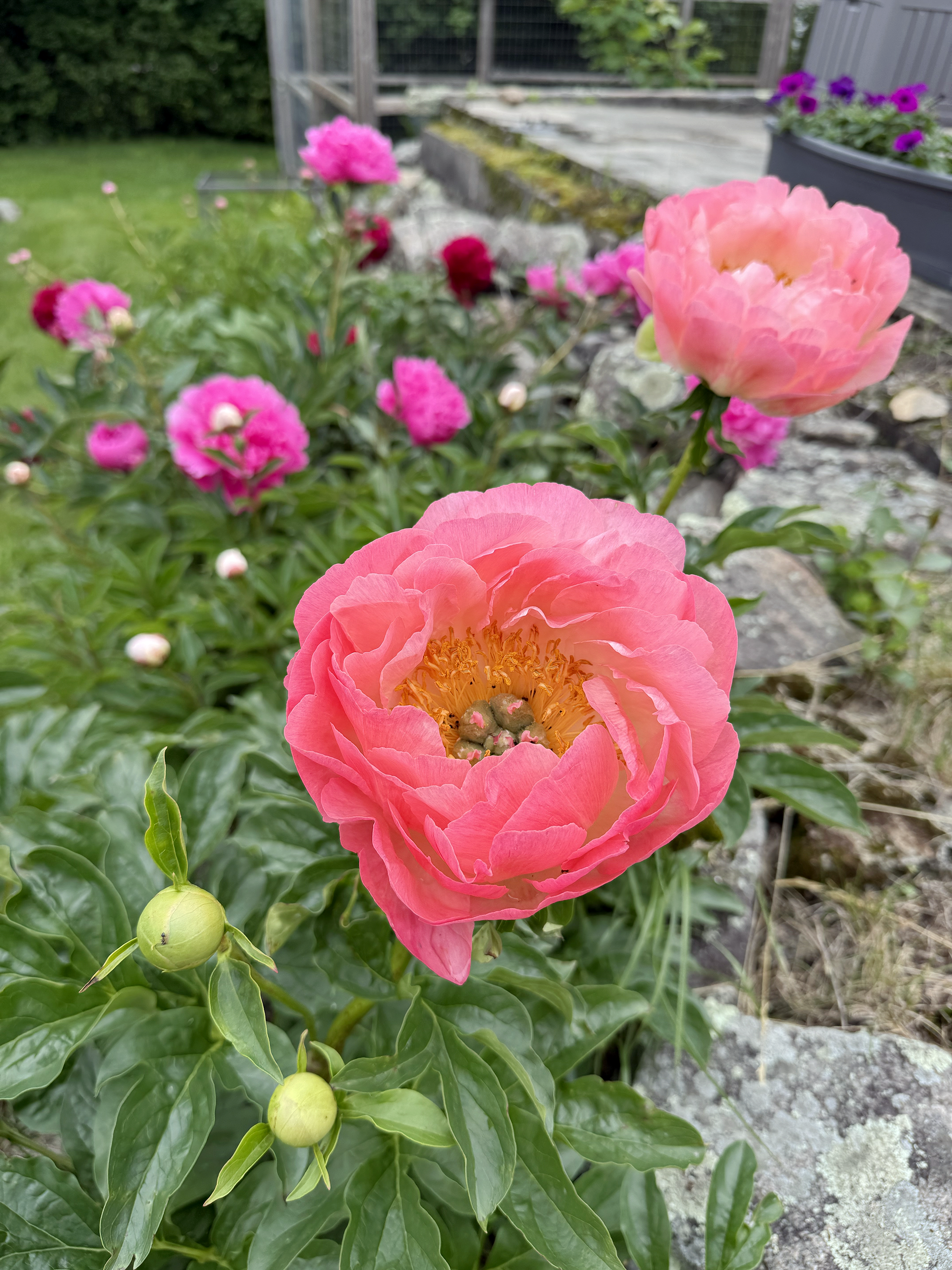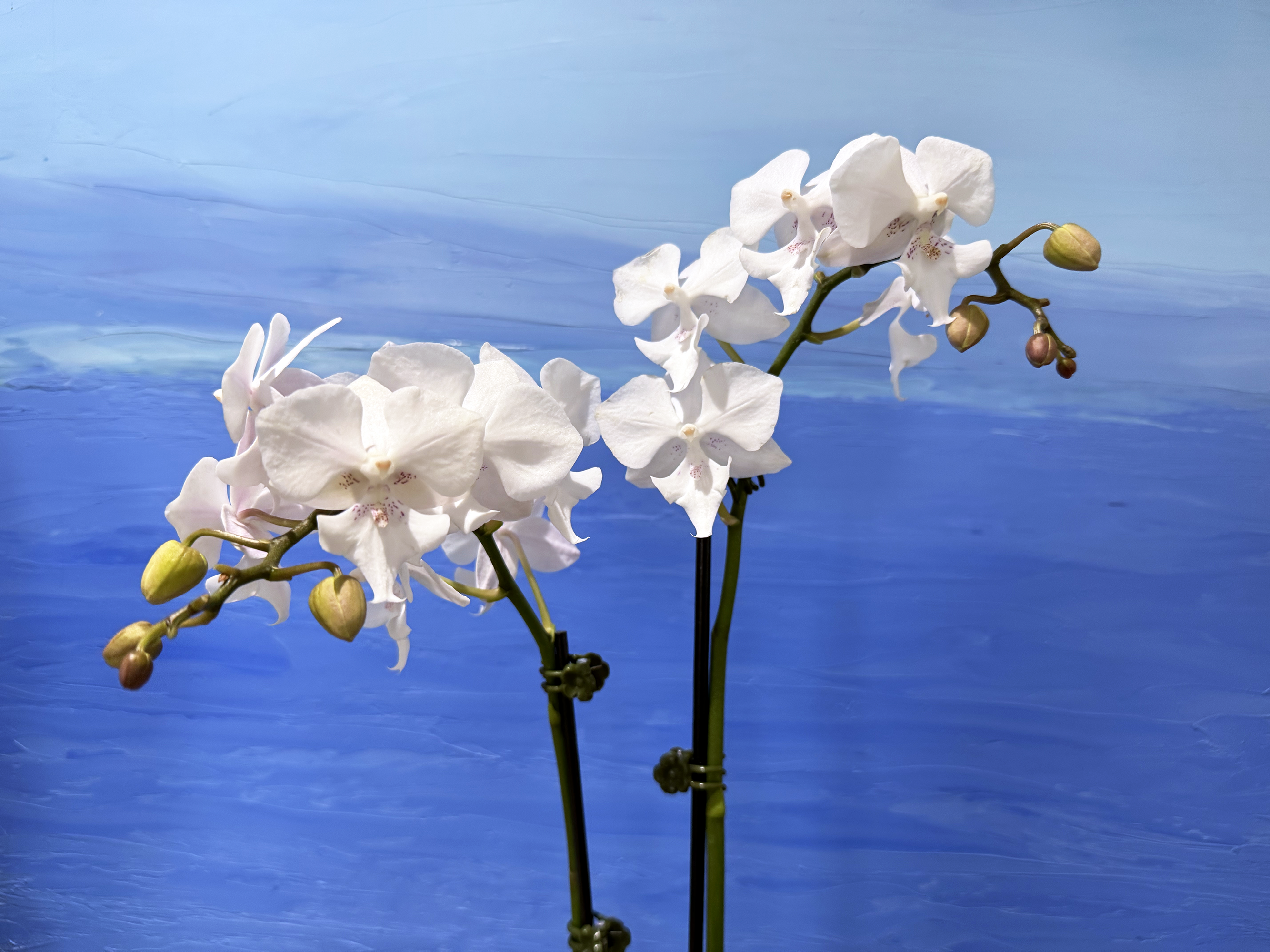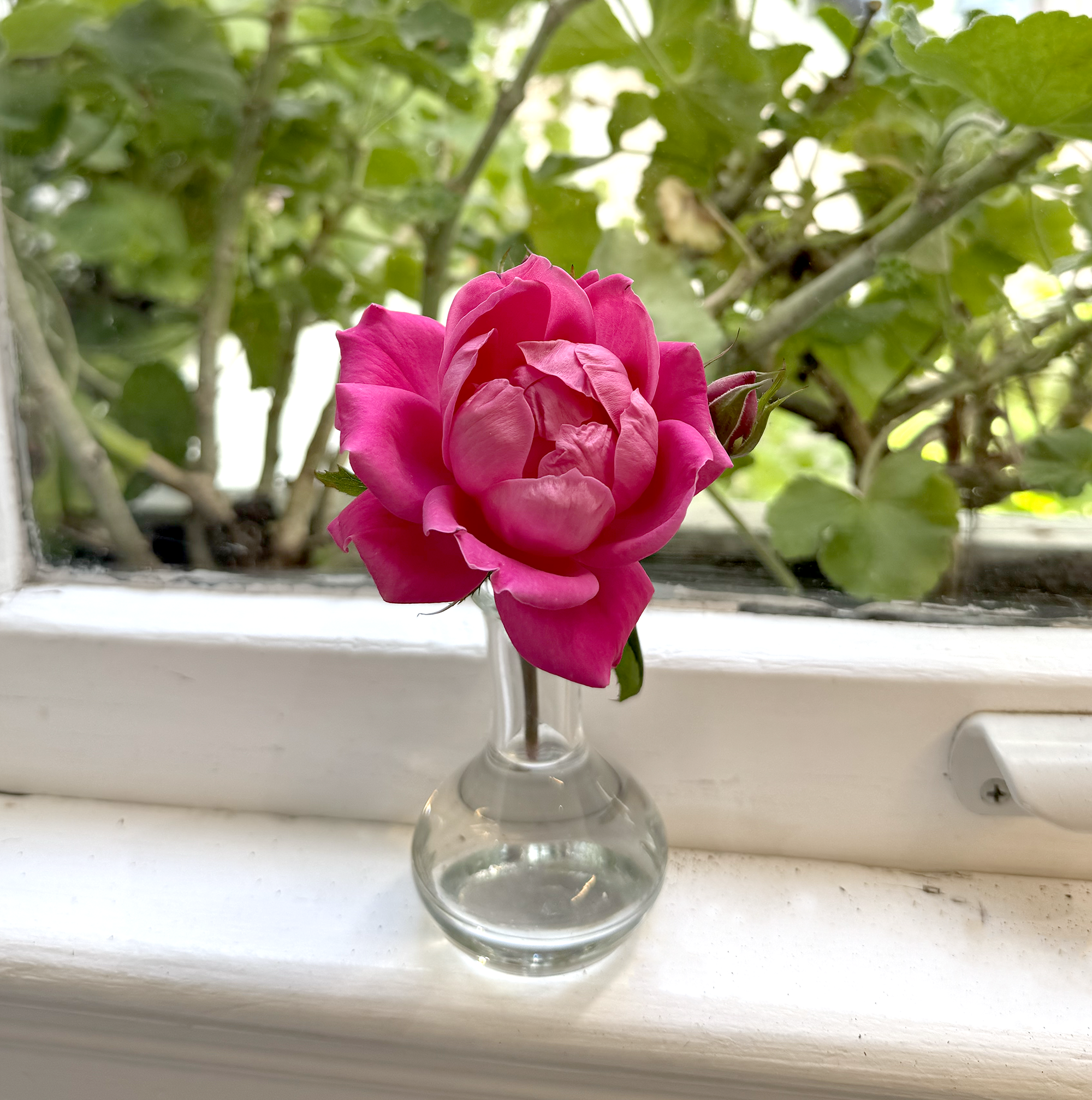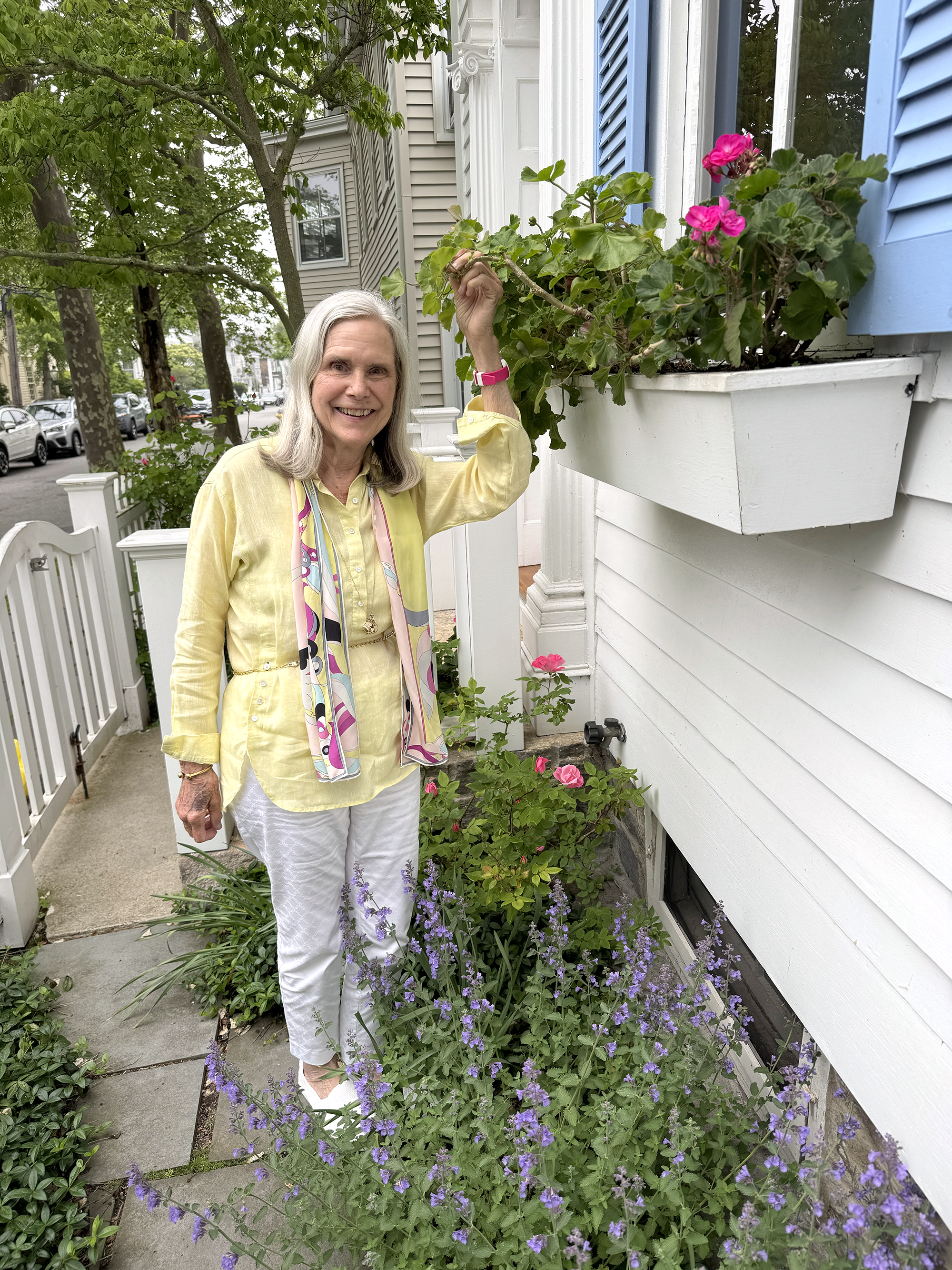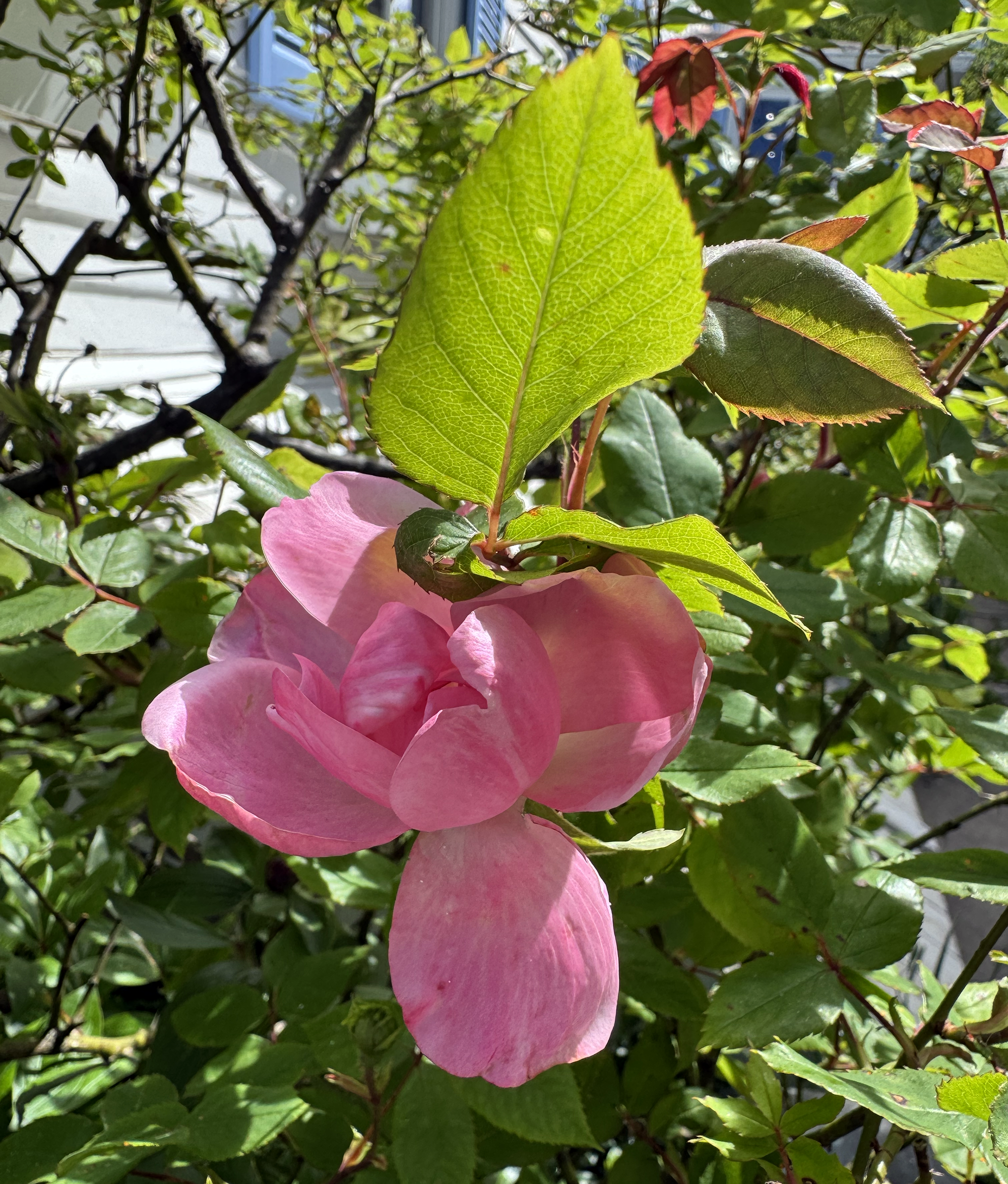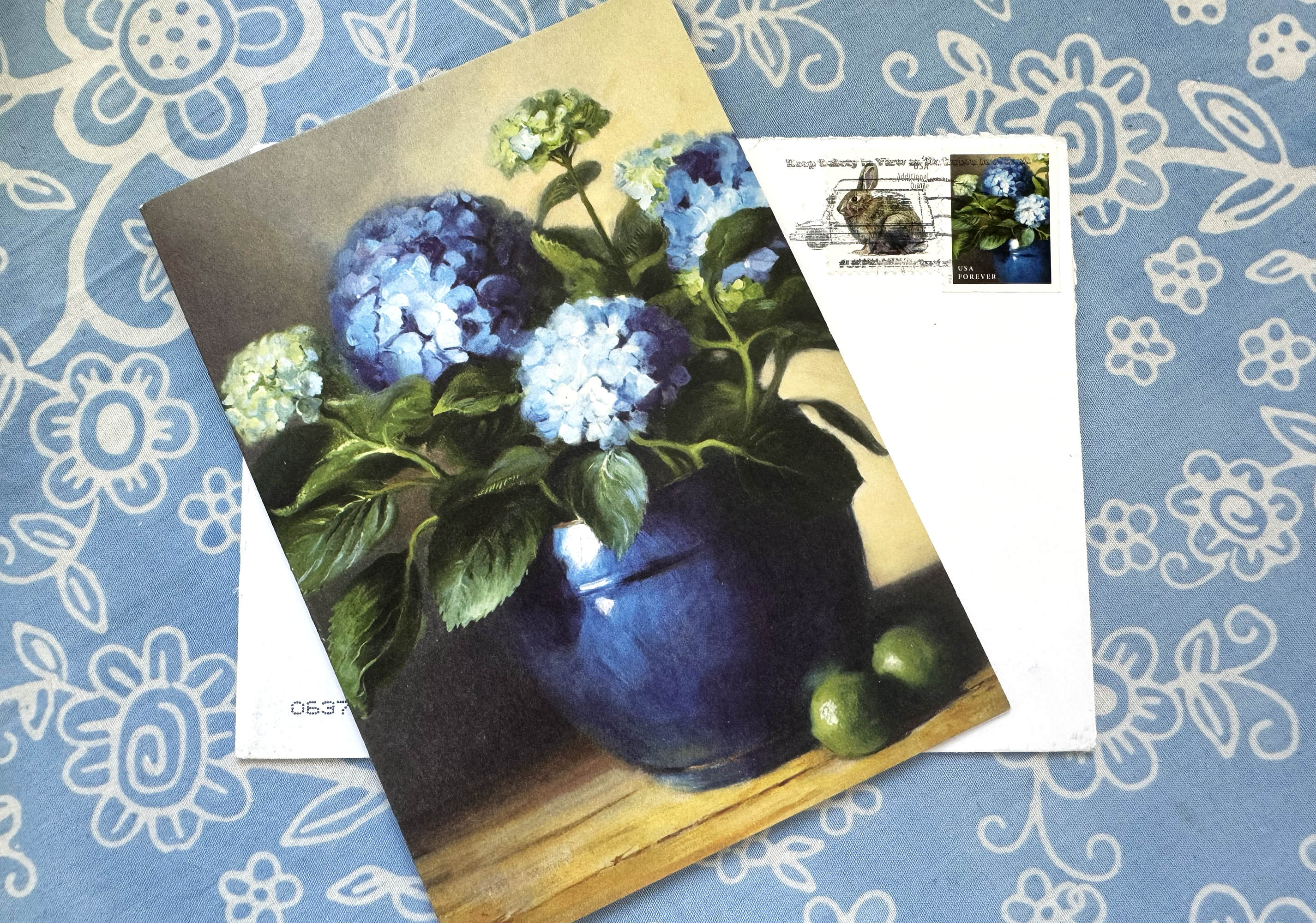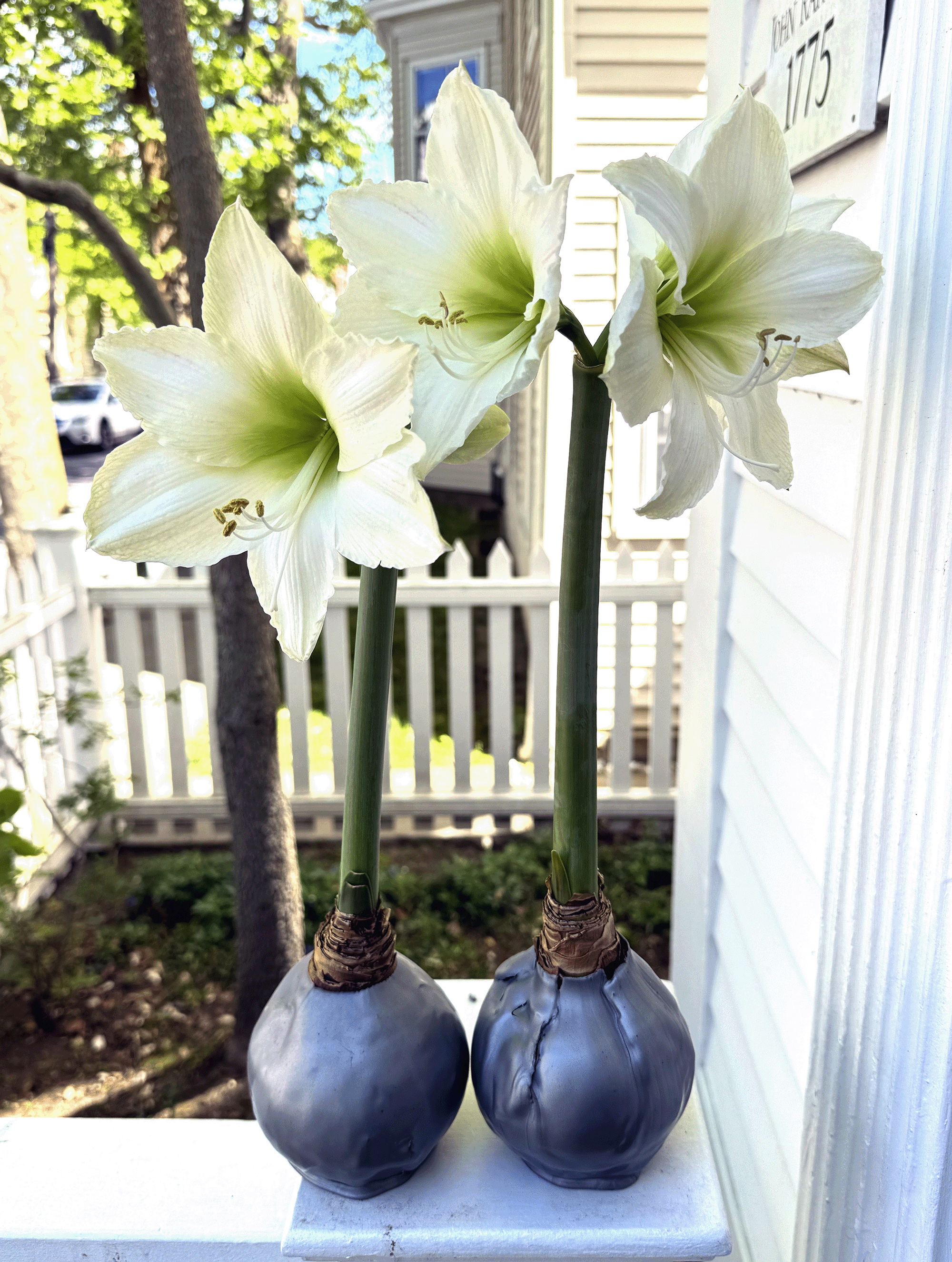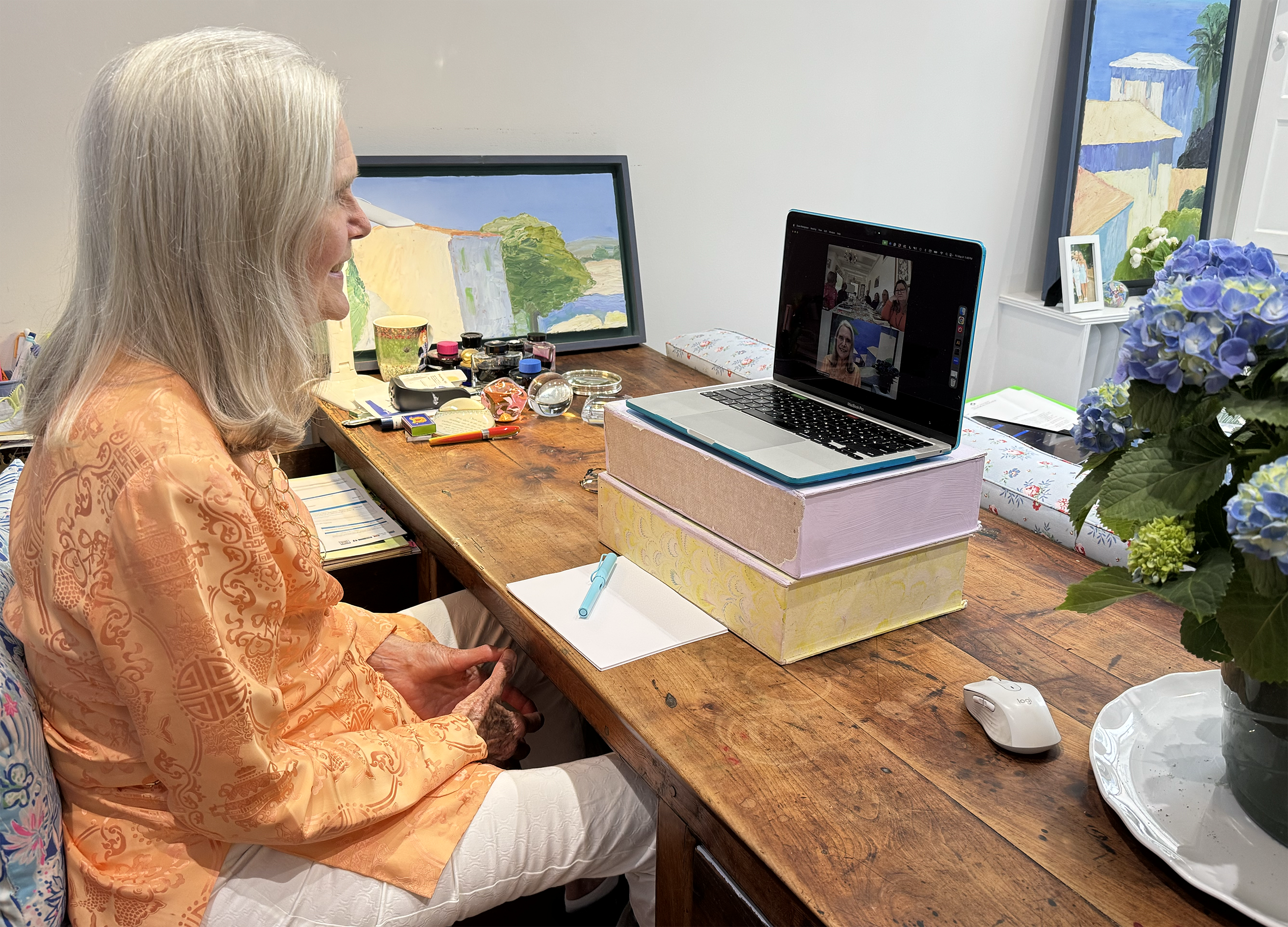AUTHOR | SPEAKER | PHILOSOPHER | DESIGNER
June 2025
Dear Friends,
I love you! Happy June. If this fresh opening month of summer is half as wondrous as the merry month of May, I’ll be in bliss.
I want to share with you some of the highlights of May. The air was scented with lilac and lily of the valley in my intimate backyard. As I drove with friends around country roads, the azalea and rhododendron were spectacularly lush and brightly colorful this spring.
Thank you for all the pleasure, meaning and happiness you add to my life. One message I want to assure you that I understand: life is precious. We can find joy in the moment we realize this life will not last forever. Our wellness is not guaranteed. Right now, when we’re as well as we are, we can celebrate fully. This is it!
I fully intend to thrive in the beauty of June’s promises. Let’s see how wonderful our days can unfold.
The American Artist Who Died in His Sleep Reading Voltaire
As a mother-daughter groove on the day after Mother’s Day, Brooke and I took an early train to New York City to see the John Singer Sargent exhibition, “Sargent and Paris,” at the Metropolitan Museum of Art. (On Mother’s Day, I’d gone with friends to see Ragtime, a powerful musical at Goodspeed Opera House in East Haddam, Connecticut.)
The Musee d’Orsay and the Met collaborated on this spellbinding display featuring perhaps the finest portrait artist of the 19th century. There were several portraits of his in our local Mystic Seaport Museum several years ago when they had an exhibition featuring Murano glass blowing in Venice, Italy. Sargent, an American, was born in Florence in 1856 and spent a decade of his impressionable early years in Paris, where he first hit his stride. His work sent him to Spain and the Netherlands to study works by his idols, Diego Velázquez and Frans Hals. He’d visit New York and Boston in his native country, but Italy and Spain inspired some great work, and their museums display the portraits he painted there.
For all of us who believe him to be a gifted genius, born to paint, his classic composition and use of white to express light is incomparable. A staircase in Capri becomes a sacred moment of appreciation for the gift of natural light. The exhibition, thankfully, gives Claude Monet credit for Sargent’s adopting the French Impressionist style of plein-air scenes. In Karen Rosenberg’s insightful New York Times art review of the exhibition, she wrote, “He continued to see his own artistic identity through a French filter — ‘American by birth, French by the brush,’ as an 1884 article from a Belgian newspaper had it.”
There are paintings in the exhibition by other great artists, including Whistler, Manet and Renoir, reminding the viewer of Sargent’s inner circle of accomplished artist friends who shared his vision of female beauty.
One of my favorite paintings in “Sargent and Paris” is of my favorite Impressionist artist, Claude Monet. In Sargent’s portrait, Monet is painting a landscape with a large expanse of sky in his beloved garden at Giverny, at the edge of the woods in the late afternoon. Light illuminates the tall trees in shades of lilac. Sargent depicted Monet’s wife, Camille, sitting nearby, near a tree, bathed in rays of luminous light streaming toward her flowing white dress.
Sargent painted dark interiors, helping us see the nuances of his figures more carefully. By the contrast of dark and light, he awakens us to look and find beauty and delight everywhere. We learn to see through his gifted lens.
One outdoor scene with lots of characters in colorful costumes has a large mud puddle in the foreground with a reflection of the blue sky. He’s causing us to look up, to see that the sky is bright blue. The rain has passed. This brown muddy water became beautiful with the echo of sunlight in its reflection. Sargent painted this detail with reverence, as if it was a famous Parisian socialite’s string of pearls.
This Met exhibition was located perfectly (not only because the restrooms were conveniently located beside the entrance). We could saunter about the French Impressionist collection en route to see the master, the “preternaturally astute portrait painter,” in the words of Karen Rosenberg. Not only did Sargent exceed what is natural; the people he captured on the canvas or sketchpad were real, inexplicably alive.
At the end of this magnificent exhibition, there was a long table with chairs. Visitors were invited to sit and sketch something or reflect on what they experienced. Small 7x7 inch square cards read, “In 1884 Sargent’s work made a deep impression. How does it resonate with you today?” I took a card that said “REFLECT” to ponder my answer.
Great art is immortal. The insightful words of the artist and teacher Robert Henri ring in my ear. He wrote in The Art Spirit:
There are moments in our lives, there are moments in a day, when we seem to see beyond the usual. … Such are the moments of our greatest happiness. Such are the moments of our own greatest wisdom. … If one could but recall the vision of these moments by some sort of sign! It was in this hope that the arts were invented. Signposts on the way to what may be. Signposts toward greater knowledge.
Great works of art let our imaginations soar and “are the moments of our greatest happiness.” Embracing the art spirit wherever your life leads is our way of making living an art, always making connections with the vibrantly alive universe.
Hamlet
A good friend suggested that I read Judi Dench’s book Shakespeare: The Man Who Pays the Rent before seeing his most famous play. What a great introduction to his powerful theater performance. Alice and I saw the play separately at the Gamm Theatre in Warwick, Rhode Island. When I saw her recently, she shared with me how forceful the acting was, especially from Jeff Church, who played Hamlet.
This 185-seat theater has a long history of performing Shakespeare plays. Over the past 10 years of going to various theaters with my “theater buddies,” I’ve been to a handful of Shakespeare performances, and several were at the Gamm. When I am exposed to professional actors who passionately get into character, where famous lines roll off their tongues, Shakespeare’s strong presence is felt. Each time I go to one of his plays, I read large chunks of the play’s dialogue beforehand. I leave the theater, without exception, in awe.
Doug, one of my friends I went to Hamlet with, has experienced Dame Judi Dench on stage in London. (I’d only seen her on television on Turner Classic Movies, and in Pride & Prejudice.) The first professional role she played as an actor was Ophelia in Hamlet. Her book is “a magical love letter to Shakespeare,” according to Kenneth Branagh, who praises this intimate glimpse into Dench’s seven-decade career as a Shakespearean actor. The book is co-written with Brandon O’Hea, a theater director, actor and associate artist at Shakespeare’s Globe Theatre, who asks Dench the questions we want to know, allowing us to hear her voice as she tells her the backstage scoop.
Q: Do you remember the first day of rehearsal?
A: God, I was terrified – absolutely petrified. Because you don’t know anything about anything, especially when you’re starting out. But it was also very exciting, because we all knew we were there for the season — that’s a whole year playing all sorts of parts in different plays and understudying.
To add to the pleasure of learning in intimate detail about this incredibly fine Shakespearean actor, Judi Dench illustrated her book with black and white line drawings and watercolors.
Dench’s reviews for her role as Ophelia “weren’t very good,” in her words, even vitriolic. At the end of the season, she was called into the producer’s office. Hamlet was scheduled to go to the World’s Fair in Paris and Brussels before then touring in America. “I’m sorry, Judi,” the producer said, “but on this tour you’re not going to be playing Ophelia.”
The part of Ophelia was eventually given back to Dench when they returned to London because the other actor, Barbara Jefford, had been offered a role at the Vic Theatre. Dench played in Belgrade, Ljubljana and Zagreb. “I’d like to think I was better. I hoped that I’d learned something,” she wrote.
Incidentally, Dench has also played the part of Gertrude, Hamlet’s mother, and the extraordinary actor Daniel Day-Lewis played the role of Hamlet.
I went to see Hamlet with high expectations because the actor, Jeff Church, had been in Twelfth Night, A Midsummer Night’s Dream and Much Ado About Nothing. As Hamlet, he was so athletic, so energetic, so graceful, so alive, it was hard to see him die at the end of this astonishing play. His advice to the players (Act III, Scene ii): “Speak the speech, I pray you.”
Dench’s love of Shakespeare is contagious; she believes those lines that he wrote “have to be good for your brain, don’t they? I don’t even have to be on stage saying them — just whispering them quietly to myself can give me an endorphin rush.”
At the end of the book, she has a section called “Advice.”
“Be kind, be curious, be playful. And keep a sense of humor.”
“Look for the pluses in life. Because they are there. It could be something as simple as smelling the blossom on a tree, or being able to sit here in this garden in the sunlight, or a phone call from a friend….”
Dame Judi Dench believes that Shakespeare belongs to everybody. “And we must allow who we are as individuals to color our interpretation of his words: everybody’s upbringing and life experiences are different, and that needs celebrating and bringing to the plays. You’ve got to find out what his words mean for you.”
Dench believes that if we “brush up on Shakespeare,” we’ll find his speech giving us “an endorphin rush.”
Citizens of London
In preparation to go to George Clooney’s Broadway play, Good Night, and Good Luck, about Edward R. Murrow, the handsome, chain-smoking head of CBS News in Europe, a friend recommended that I read the historian Lynne Olson’s insightful book about World War II, Citizens of London. Edward R. Murrow first arrived in London in 1937 and was one of the three main characters in this inspiring, deeply informative book. In Olson’s acknowledgments, she states that the eight years Murrow spent in Britian (most of them during the war) were the most satisfying. There were small groups of Americans who supported the British struggles in the terrifying early days of World War II and made a difference in Hitler’s defeat. “My first expression of thanks must go to Edward R. Murrow,” Olson wrote, “for without him, I would not have written this book, or, for that matter, the two that preceded it.”
When I asked friends if they were interested in reading an excellent book about World War II, subtitled “The Americans Who Stood with Britain in Its Darkest, Finest Hour,” I learned that as endlessly fascinating as World War II is, many aren’t in the mood to currently relive that unrepeatable horror. Olson writes, “I’ve observed today that people have very little to say. There are no words.”
Some of the highlights of this engaging book were how clueless Americans (in Washington) were about what was happening in London and how vulnerable every person was at all times, day and night, who was there during the Blitz. Edward R. Murrow was there! He understood that “it is almost impossible to substitute intelligence for experience.” He believed in forces of decency but knew, first hand, that “in order to write or talk about danger, you must experience it … it teaches you something about yourself.” He was there from the beginning to the end. Before, during and after the war. No degree of privilege protected him from danger.
“There is only one duty, only one safe course, and that is to be right and not to fear to do or say what you believe to be right.” —Winston Churchill
Germany began “its relentless aerial assault on London in September 1940,” Olson wrote. Americans listened to Murrow’s broadcasts on the radio. ‘This is London.’ The violent noise of the Blitz awakened listeners. The bombs spoke louder than words.
By the end of the war, Murrow had flown in 24 bombing raids. In his words, this was “no time for frivolity.” Just a few days before D-Day, he made the first live radio broadcast from an American bomber, flying in a mission over occupied France.
Just one week after D-Day’s jubilant success, on June 13, 1944, the Germans attacked London with pilotless missiles; the Blitz lasted for three months. Murrow was there.
I’m so glad I read Citizens of London before seeing Good Night, and Good Luck. We have to continuously be reminded of the sacrifices Americans have made to defend democracy and honor those who made them for our continued freedom and liberty.
Hearing Murrow’s voice, seeing Clooney portraying him on a huge screen broadcasting his radio show at the Winter Garden Theatre on Broadway, was riveting, mesmerizing and electrifying: we were in the studio, feeling the tension and drama of Murrow’s live broadcasts.
I went to see Good Night, and Good Luck with my friend Carolyn, who was equally elated by Clooney’s performance. It was so fast paced, so tightly written, so serious. Blessedly, there was humor to provide relief! During the hour and a half with no intermission, the clock stopped. The energy in the packed house was palpable. In Clooney’s closing broadcast, directly to the audience, he left with a question: “What are you going to do?” We left the theater feeling exhilaratingly inspired and challenged.
Stay tuned: CNN will broadcast Clooney’s play on Saturday, June 7, in the evening.
“We’re all in the same boat.” —Franklin D. Roosevelt
“If we are together, nothing is impossible. If we are divided, all will fail.” —Winston Churchill
“People seem to want to be misled, want to believe that things are going to be easy…” —Edward R. Murrow
“Let’s do it.” —Edward R. Murrow
Memorial Days
Geraldine Brooks wrote a moving, beautiful memoir published this year about sudden loss and how she’s figured out how to find inner peace.
On Memorial Day 2019, she received a phone call from a total stranger telling her that her husband, Tony Horwitz, had a heart attack and died. He’d been on a brutally taxing book tour for his latest book; he collapsed on the side of the road.
Death is so final. When death is completely unexpected (Tony was 60), and Geraldine learned this tragic, fatal news over a random phone call from an impersonal unknown, how on earth is someone able to cope? Where were her loved ones surrounding her, holding her hand? Who was there at that moment when her entire life’s future vanished? Her life was forever changed. Who was there to prop her up, giving her support, comfort, kindness and compassion?
Tragically, no one. Not then, at home, in West Tisbury, Massachusetts, ironically on Memorial Day. Their two sons were elsewhere. “A tired young doctor had picked up my husband’s cell phone (Tony had never set up a passcode),” she wrote, “and hit the speed dial for HOME.”
Everyone faces the unwelcome reality of loss differently. We don’t know for certain how we will feel or even think about a future loss until it happens. We can be stoic in our philosophy and general attitude about the way we live our normal lives. However, each of us experiences loss personally. Our loss is ours alone. The greatest form of all kinds of permanent loss is death. Loss changes our reality. Everything is normal until bad news catches us off guard. We tend to hope for the best, but we don’t always plan for the worst.
Geraldine Brooks was in shock but had to cope with her two sons’ loss and all the consequences of properly honoring the death of her beloved husband. Her credit was put on hold because her husband was the main card holder. She lost her family’s health insurance. She had obligations, responsibilities that Tony had handled and she now must manage.
Three years after he died, Brooks still suffered from a broken heart. She instinctively knew she wanted to be alone and quiet, in nature’s beauty, to envision their 35 adventurous years of risk and love. She flew to a remote island off the coast of Tasmania. There, in a rental shack with an outhouse, overlooking the rugged sea, she was free to contemplate. How do other cultures mourn? She gave herself time and distance from civilization to think through her emotions about her own grief.
Personally, I prefer not to use the word grief. Once we’re face to face with a loss of great significance, we will experience emotional pain. Each of us has to take whatever time it takes to work through our emotions. We do whatever it takes to forge a path to our eventual acceptance in order for us to build our own future. We need time and space (freedom) to figure out how best we can live well under circumstances that are beyond our will to control.
We will all feel this pain, and how we choose to live during this process varies, changes and is complex. From my own experience with loss, I want the freedom to work out my emotions that bring my love of the person who died closer to me. I want to heal my wounds by intensifying the love connection, cry when the tears flow and, in time, celebrate with happy tears.
By taking time to readjust, rethink and be alone, we quietly listen to the still, small voice from within. We come closer and closer to our loved one’s essence. No amount of magical thinking will bring their physical presence back. We can keep the memory alive through our own tributes to honor the legacy of a person we will keep present in our soul as long as we’re alive.
Brooks, by escaping to a faraway, deserted island retreat, became still, was left alone to become close to Tony in a new, higher realm. On the terrace facing the sea, there were two daybeds. One afternoon, she envisioned Tony cuddled up reading or having a nap next to her. There was a moment of clarity, comfort and support. Mysteriously, indescribably, they were reunited in spirit. At that aha moment, the bittersweet mix of pain and pleasure felt sweet.
She told her story. She wrote it down.
This story of a death is the story that dominates my life. Here I have retold it, rethought it. But I can’t change it. Tony is dead. Present tense. He will be dead, in the present, in my present, for as long as I am still alive. I cannot change that story. I can only change myself.
The Wisdom of Grace
As you know, every time I receive a letter, it is a grace note. Recently I poured myself some turmeric-ginger tea, sat at my desk in the study, looked out at the ripples of waves on the water in the harbor and took in a deep breath. The lilac-colored tulips on the desk had opened up wide, showing their scalloped petals. The American flag was soaring in the vigorous, rhythmic breeze. The sky was blue, blue, blue, blue. These are the words Brooke wrote in her journal as a little child on her first trip to Greece. She wrote of the ocean: “blue, blue, blue, blue, BLUE!”
I opened a letter from Sarah O. Longoria, who lives in Salt Lake City. Her lovely cursive handwriting, the blue hydrangea Forever stamp, the Easter bunny booster stamp (a grace note; one extra flourish) and the new blue ink in her fountain pen made me aware that she knew I am passionate about blue hydrangeas. Hydrangeas are flowers that nourish my spirit, year-round, knowing there will be a profusion in the backyard. A symphony of hydrangeas bursts into full blossom around July Fourth every summer.
I know Sarah through her correspondence. She knows me through my writing. Ever since a kindergarten friend moved away in first grade, she’s loved writing letters. She is a dancer and a dance teacher who uses “the word grace as an acronym for the qualities that we all strive for in our dancing.” (She knows I love the word grace.)
She wrote:
Generosity, resilience, awareness, compassion and ease. … For our amazing bodies, for the time and space to dance, etc. If we feel like we have enough, we have enough to give to others.
The way to build resilience of body and emotions is through our breath … breathing through movements and with movements, and breathing through uncomfortable emotions.
Awareness is gained through noticing … noticing sensations in the body and thoughts in the mind, without judgment, just noticing.
Compassion is essential for these things that we notice … our being human, our flaws, mistakes, when met with compassion, can become ways to learn and grow and blossom as ourselves.
And ease … letting go of expectations and unnecessary effort, leaving only your true essence to shine. You are enough as you are. You can relax beautifully.
Grace is everywhere, always available. When we welcome it as our constant companion, our lives are touched with serendipity and blessings.
When I spoke with Sarah recently, she was so happy that she’d painted her bedroom white and her ceiling atmosphere blue. When I asked her if she wanted to share her insights about grace with my readers, she was pleased. Sharing grace with others is a grace. “If we feel we have enough, we have enough to give others.”
Thank you, Sarah. (Now you have a record of your wise words about grace!)
Tea at Five
I’m an ardent devotee of Katharine Hepburn. I admire her pluck, her resourcefulness and her courageous spirit. My friend Alice and I went to the opening matinee of Tea at Five at the Ivoryton Playhouse, where Katharine got her start in 1931. She lived in nearby Fenwick, Connecticut, at her family estate.
This one-woman show by Matthew Lombardo opened off-Broadway in 2003. Alice had seen it then with the actress Kate Mulgrew. Another friend, Susan, who works at the Ivoryton Playhouse, also went to see the play with her mother in New York and sent me a review by Bruce Weber that had appeared in the New York Times. Apparently, Alice learned, the play only lasted a week and a half because the actress was too exhausted to “be” Kate, alone on stage.
Carlyn Connolly plays Katharine Hepburn in two acts. Act I is set in 1938, during the great hurricane that washed her house down the river. Act II is set in 1983, when she’s older, has the tremors and lets her dukes down. She speaks to the audience about her 27-year partnership with Spencer Tracy, wearing his red sweater over her shoulders.
The play gave the enthusiastic audience intimate details about Hepburn’s life and legacy. I left the theater grateful, feeling her powerful energy and thinking of her larger-than-life talent.
The photographer John Bryson started photographing Hepburn in 1974 and seemed to follow her around wherever she went over the years. In 1990, he produced the coffee-table book, The Private World of Katharine Hepburn, published by Little Brown.
I relate to these photographs of her because I am roughly the same age she was in some of the glossy pages of her daily activities in the autumn of her life. She never stopped climbing trees. There’s a certain beauty when accomplished women age. Every time I wear a turtleneck, I think of her! (“It’s all about the neck!”)
Throughout her life, she dared to be true to herself, not paying attention to society’s expectations of women’s traditional roles.
Reunions
My granddaughter’s college graduation was on a warm, sunny day after a forecast of a storm that never came. The graduates are going to be our leaders in the years ahead.
We had another family reunion at the end of May in Stonington Village, ending these past calm, peaceful halcyon days on a high note.
Enjoy your family, friends and the spontaneous interactions with the neighbors and strangers you meet along your journey. Look and find the connection of your encounters.
In closing, thank you for sharing your love of life with me in vividly colorful, specific detail! I look forward to hearing more of your stories. We learn the most from each other because of mutual respect, trust and love.
Love & Live Happy,

Virtual Events
I loved speaking at another Zoom event in May with my friends at Gibson House Manor. If you're interested in hosting me for a virtual event or talk, please reach out!
This month, I'm letting go of a lithograph by Roger Mühl if anyone is interested in adding it to their art collection. Please contact Pauline at Artioli Findlay (pf@artiolifindlay.com) for more information.
Roger Muhl (French, 1929 - 2008)
Provence VII, Les villages sont construits sur les collines
Limited edition French lithograph
16 1/2 x 12 1/2 inches
The image is printed to the edge of the sheet of paper.
Edition #VII of XX
Executed/printed 1986
A village on a hill in Provence that has saturated light rooftops.

